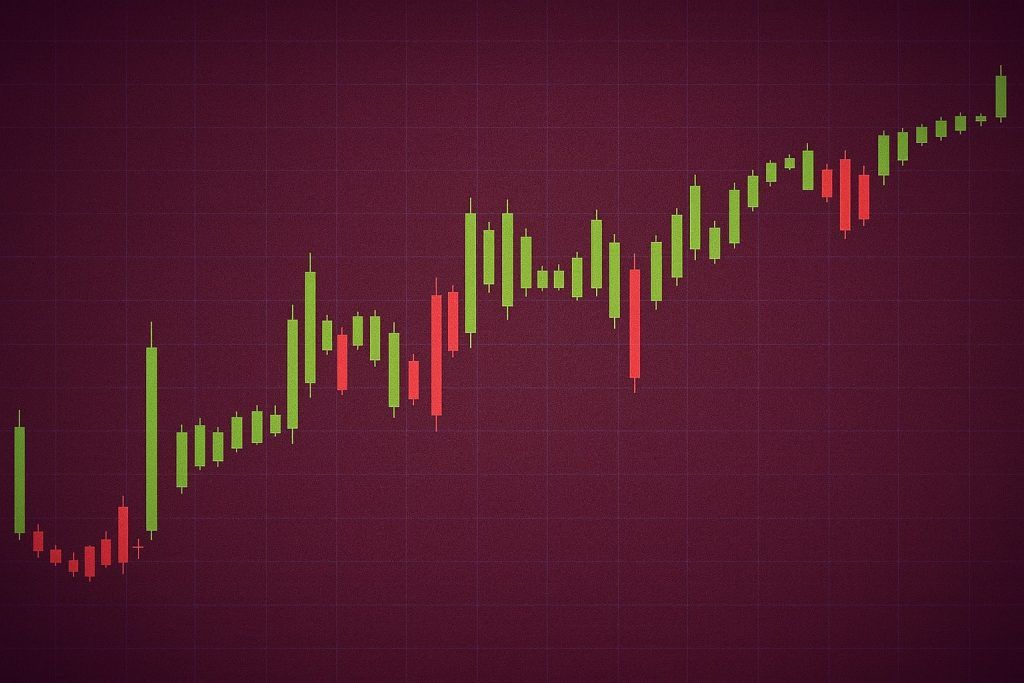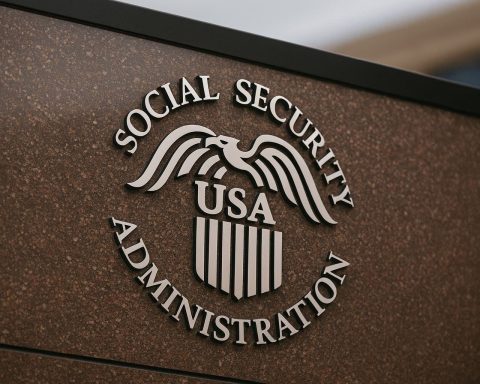- 90% ignore advice: Schroders and Allianz surveys find nine in ten U.S. workers plan to claim Social Security before age 70, despite experts warning that delaying benefits boosts lifetime income by roughly 30% (about $182,000 in additional payments) [1] [2]. Only 10% say they’ll wait until 70 to take the maximum payout.
- Widespread income worries: Nearly 87% of non-retired Americans are concerned about generating enough retirement income, and over half (53%) fear they’ll outlive their savings [3]. 44% plan to file before the “full” retirement age of 67 (versus only 10% at 70) [4]. Many cite the need for cash now or fear Social Security’s future solvency.
- Modest 2026 COLA: The Social Security COLA for 2026 is forecast around 2.6–2.8% [5] – roughly a $54/month boost for the average retiree (from $2,008 to ~$2,062) [6]. But this bump will be largely offset by other rising costs: Medicare Part B premiums are rising about $21/month, and food, housing and health inflation is outpacing the COLA [7] [8].
- Financial markets & inflation: U.S. stocks are at new highs – on Oct. 24 the S&P 500 was about 6,785 and the Nasdaq 100 25,343 [9] – as investors awaited fresh CPI inflation data. Markets expect September CPI around +3.1% YoY [10] [11], which could cement bets on Fed rate cuts in 2026. The 10-year Treasury yield hovers near 4.0%, and many retirees are shifting portfolios toward bonds and dividend stocks to lock in income [12] [13].
- Expert advice: Financial planners urge using savings (401(k) or investment cash) as a “bridge” to delay Social Security and maximize benefits, but few do. In fact, over half of Americans admit knowing little about how Social Security fits their plan [14]. “Social Security is a key part of a retirement strategy… taking full advantage of the program involves careful planning,” notes Kelly LaVigne of Allianz Life [15] – advice echoed by many analysts.
In short, most retirees are stuck in a cash crunch. They need the income now, even though postponing Social Security would boost their checks permanently [16] [17]. A survey by Schroders (released Oct. 22, 2025) found 37% say they’ll claim early simply to get money sooner, while 36% fear the program might run out [18]. Deb Boyden (Schroders’ head of U.S. retirement) warns that many Americans are anxious about solvency “and yet so few are willing to hold off” taking benefits [19] [20]. In other words, fears of a social security crash and living paycheck-to-paycheck have outweighed the math: waiting longer could mean tens of thousands more dollars in your pocket over a lifetime.
Americans Facing a Retirement “Shortfall”
A September 2025 Schroders retirement survey confirms the sense of a retirement funding crisis. Some 87% of workers say they’re at least somewhat worried about having enough income in retirement [21]. On top of that, many admit major knowledge gaps. Allianz’s 2025 Retirement survey found 55% of pre-retirees “know little” about how Social Security will fit into their overall retirement plans [22]. And a hefty 74% of retirees report earning less than 75% of their final paycheck in monthly retirement income [23], signaling a large savings shortfall.
The gap between expectations and reality is stark. Many Americans plan to retire on Social Security plus modest savings, but in practice the money often runs out early. For example, Bankrate reports 58% of workers feel behind on their retirement savings goals [24]. Nearly 1-in-5 Americans mistakenly believe Social Security will provide all their retirement income [25], when in fact it replaces only about 40% of pre-retirement wages on average. The end result: retirees often “live like there’s no tomorrow,” says Bankrate economist Mark Hamrick, which can become a “self-fulfilling prophecy” of under-saving [26].
Credit card and debt burdens make this worse. Total U.S. credit card debt has swelled to over $1.2 trillion at ~25% interest rates [27]. A Motley Fool analyst notes that high-interest debt “can stand between you and your ideal retirement” [28]. Many older households now spend thousands more each year than their income (funding the gap with credit cards) [29]. In this environment, people understandably rush to claim guaranteed Social Security checks as soon as possible.
Social Security’s 2026 COLA: Small Increase, Big Questions
Another retirement storyline this week is the pending COLA announcement for 2026. Because of a government shutdown, the usual mid-October release was delayed – the SSA will finally announce the new cost-of-living adjustment on Oct. 24, 2025 [30]. Experts (including Kiplinger’s economists, the Senior Citizens League and AARP) have been forecasting a roughly 2.6–2.8% increase [31]. In practical terms, that means the average retired worker’s check (~$2,008/month) would jump by about $54/month [32] when the COLA takes effect in January 2026.
However, advocates caution that monthly budgets are still tightening. The Senior Citizens League notes that Medicare Part B premiums are expected to climb from $185 to about $206 next year – nearly $21 more per month [33]. In effect, half of the COLA bump vanishes with higher healthcare costs alone. Add in food, rent and utility inflation (all running above 2.7%), and “there’s not much left over,” says Kevin Thompson of 9i Capital [34]. As he bluntly observes, “a $30,000 annual Social Security benefit only increases by about $67.50 per month. When you factor in the $21.50 increase in the Medicare Part B premium, there’s not much left over” [35].
Critics also argue the COLA formula itself doesn’t reflect retirees’ reality. The CPI-W index (urban wage earners) underweights housing and healthcare – the very costs seniors face – so Social Security’s purchasing power has effectively fallen about 20% since 2010 [36]. Many advocates urge Congress to switch to a “CPI-E” formula for the elderly. As one analysis puts it, even a 2.7% COLA “won’t be enough to cover the rising costs seniors face” [37] [38].
Despite these headwinds, there was a one-time boost earlier in 2025 that helped some retirees. A new Social Security Fairness Act (passed in 2025) eliminated the Windfall Elimination Provision (WEP) and Government Pension Offset for many beneficiaries. Kiplinger reports that change added several hundred dollars to many checks this year [39]. In other words, some retired teachers, federal workers and others saw their checks jump sooner, independent of the COLA discussion.
Retirement Investing and the Market Outlook
While Social Security rules dominate retirement discussions, many workers also watch financial markets closely. Today (Oct. 24) U.S. stock benchmarks are near all-time highs [40]. Early trading showed S&P 500 futures up about +0.8% after cooler-than-expected inflation data [41]. On Oct. 23 the S&P 500 closed around 6,785 (+0.5%) and the Dow Jones near 46,972 (+0.49%), while the Nasdaq 100 hit about 25,343 (+0.76%) [42]. Investors are eyeing September’s CPI release (forecast ~3.1% YoY) as a guide: if inflation continues to slow, markets expect the Fed will begin cutting rates in mid-2026 [43] [44].
The bond market reflects this outlook: the 10-year Treasury yield is roughly 4.0% [45], implying moderate easing ahead. Many retirees are already shifting their portfolios. For example, in Q2 2025 about 42% of 401(k) contributions went into bond funds (just 9% into stocks) as older savers seek safety [46]. Income-oriented stocks are also in vogue: analysts point to high-dividend plays like Realty Income (NYSE: O, a REIT yielding ~5.5%) and energy midstream firms like Oneok (NYSE: OKE) as steadier bets for retirees [47].
On the economic front, forecasts are mixed. Hiring and growth remain relatively strong, but inflation is stickier in services and housing. If October’s CPI comes in hot (above expectations), the Fed could hold rates higher for longer, which might damp stocks and bond prices. Conversely, softer inflation will likely reinforce the rally we’ve seen: indeed, S&P futures climbed on the October 24 CPI news [48]. Much depends on the trajectory of price pressures and any fiscal policy shifts after the next U.S. election. For now, many analysts expect modest growth, a plateauing labor market, and Fed rate cuts penciled in for late 2026.
“Act Now” – Expert Recommendations
Given the tight financial picture, retirement experts emphasize careful planning now. Dave Ramsey – a high-profile financial advisor – warns that retiring in your early 60s “is like jumping out of a plane without checking your parachute” [49]. His point: many people underestimate longevity and need more assets than they think. Allianz’s Kelly LaVigne similarly stresses that Social Security must be integrated into a broader plan: “Taking full advantage of the program… involves careful planning” [50].
One often-discussed tactic is a “bridge strategy.” This means using other assets (savings, investment accounts or part-time work) to fund living expenses while you delay taking Social Security to age 70, thereby locking in the higher lifelong benefit. AARP’s research notes that few retirees use this tactic, in part because it requires having substantial savings and being disciplined about drawing them down. The Congressional Budget Office and policy analysts say it sounds simple, but “turning a lump sum that you’ve spent your entire life accumulating into an income stream… is really scary,” as one expert put it [51]. Nonetheless, for those who can afford it, the math is compelling: each year you delay Social Security after full retirement age adds about 8% to the monthly check.
At a minimum, advisors urge working savers to prioritize retirement contributions. Bankrate economist Mark Hamrick warns that “living like there’s no tomorrow” (i.e. overspending) jeopardizes future security [52]. CFP Board CEO Kevin Keller notes that “early money choices echo for decades” [53], so starting to save or pay down debt today can make a big difference. On the flip side, those already retired should adjust to the new reality: review budgets, shop Medicare plans (Open Enrollment ends Dec. 7), and resist treating the COLA like “free money” given how quickly it’s consumed by costs.
Many seniors also fear Social Security cuts. A 2025 HousingWire/AARP poll found only 36% trust the program will last [54]. In Washington, lawmakers are quietly debating fixes: raising payroll taxes, trimming benefits, or adopting CPI-E. For now, experts say the best “fix” for most people is personal: save more, plan carefully, and consider delaying Social Security as long as you reasonably can. As Schroders’ Deb Boyden summed it, while Americans need Social Security income, holding off even a year or two can “have a meaningful impact on your finances in retirement” [55].
Sources: Recent surveys and news reports (CBS MoneyWatch, AARP, HousingWire, etc.) and financial analysis (Schroders, Kiplinger, Investopedia) provide the data and expert commentary used here [56] [57] [58] [59] [60]. Stock index and bond yield values are as of market close on Oct. 24, 2025 [61] [62].
References
1. ts2.tech, 2. www.cbsnews.com, 3. www.housingwire.com, 4. www.housingwire.com, 5. ts2.tech, 6. ts2.tech, 7. ts2.tech, 8. ts2.tech, 9. 247wallst.com, 10. ts2.tech, 11. seekingalpha.com, 12. ts2.tech, 13. ts2.tech, 14. ts2.tech, 15. ts2.tech, 16. www.housingwire.com, 17. www.cbsnews.com, 18. www.housingwire.com, 19. www.housingwire.com, 20. www.cbsnews.com, 21. www.housingwire.com, 22. ts2.tech, 23. www.planadviser.com, 24. ts2.tech, 25. www.cbsnews.com, 26. ts2.tech, 27. ts2.tech, 28. ts2.tech, 29. ts2.tech, 30. ts2.tech, 31. ts2.tech, 32. ts2.tech, 33. ts2.tech, 34. ts2.tech, 35. ts2.tech, 36. ts2.tech, 37. ts2.tech, 38. ts2.tech, 39. ts2.tech, 40. 247wallst.com, 41. seekingalpha.com, 42. 247wallst.com, 43. ts2.tech, 44. seekingalpha.com, 45. ts2.tech, 46. ts2.tech, 47. ts2.tech, 48. seekingalpha.com, 49. ts2.tech, 50. ts2.tech, 51. www.aarp.org, 52. ts2.tech, 53. ts2.tech, 54. www.housingwire.com, 55. www.housingwire.com, 56. www.cbsnews.com, 57. www.housingwire.com, 58. ts2.tech, 59. 247wallst.com, 60. ts2.tech, 61. 247wallst.com, 62. ts2.tech










